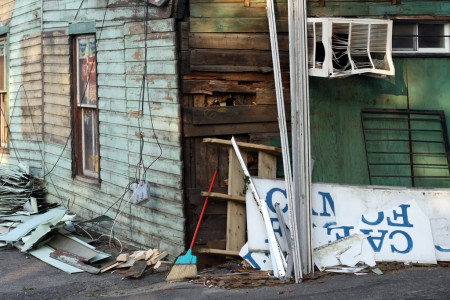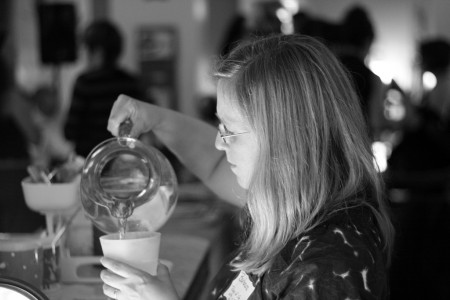
The basic equation of climate change is simple enough: add greenhouse gases to the atmosphere and you warm the planet. Of course, there are endless complications in areas like changes in precipitation, sea level, etc.
There are, however, a relatively small set of reasons for which climate change could potentially enormously problematic, or even a civilizational threat. That is to say, one that has the capacity to eliminate or virtually eliminate civilizations with the major characteristics of being industrial, such as level of technological advancement and share of the population whose primary vocation is farming.
The probability of all of these is unknown, and may be very low. Still, they bear consideration when we are deciding how precautionary an approach we should take when it comes to reducing emissions. Also, more than one of these could happen simultaneously.
1) It could happen very quickly
While the normal order of business for climatic changes seems to be gradual change, there is some evidence that it is possible to cross some threshold and experience massive sudden changes. An example would be the mass melting of icecaps in Greenland and Antarctica, producing several metres of sea level rise in a matter of decades. Rapid sea level rise (albeit perhaps not to that degree) has happened before, as the result of other ‘forcings’ that affect the climate system.
More rapid change would be harder to adapt to than slower change. Rather than having to make gradual changes to how we grow food, use water, etc, we would be confronted with the immediate necessity of making big, expensive, and politically difficult changes.
2) It could take place to an extreme extent
The ultimate extreme – seeing our oceans boil away and the planet turn into a burning hell like Venus – is probably impossible. That being said, a much less dramatic change could still strain the ability of human beings to cope. There is a general consensus that warming of more than 2°C would be ‘dangerous’ and that each additional degree would heighten problems such as agricultural failure and lack of access to fresh water.
A business-as-usual course of greenhouse gas emissions that takes atmospheric concentrations to over 1000 ppm by 2100. If climate sensitivity is high (say, 8°C) then the warming that results could average 25°C above pre-industrial levels, worldwide (with more warming in high latitudes). That would surely cause massive agricultural problems and leave many areas uninhabitable. Even with sensitivity at the high end of the IPCCs probable range (4.5°C), 1000 ppm conditions could generate warming of over 15°C.
3) It could become self-sustaining
The climate system contains a number of positive feedback effects, where warming causes a change that produces more warming. Examples include sea ice melting to reveal more heat-absorbing ocean, melting permafrost releasing methane, and tropical forests drying out and burning.
If the natural world began to regularly emit more greenhouse gasses than it was removing from the atmosphere, even cutting human emissions to zero would not prevent further climate change. Our only options would be various forms of geoengineering: air capture to remove greenhouse gasses directly from the atmosphere, or techniques to alter how the planet absorbs and reflects solar radiation.
If there is a threshold beyond which runaway climate change begins, humanity might find itself trapped between facing an unknown level of warming (to stop only when the system finds a new equilibrium) or taking the desperate step of trying to actively engineer the climate.
4) It could foster conflict
Even without any of the scenarios above, it is plausible that climate change could kick off major conflicts. Bangladesh and Florida could be permanently submerged. Major river systems could see massively decreased flows. Major famines could result, etc.
If the climate changes experienced were abrupt, the danger of conflict would be further heightened, as states made desperate attempts to cope and populations relocated.
In the end, our best chance for dealing with climate change is for states to begin cooperating when they still have a good amount of time and lots of resources to direct at the issue. Also, when their will to cooperate isn’t being reduced by Hobbesian tensions. By investing reasonable amounts now in transforming our energy system and protecting carbon sinks – as well as by creating increasingly powerful incentives to reduce greenhouse gas emissions – states can not only prevent the scenarios above from occurring, they can also switch the energy basis of their society from dirty and unsustainable fossil fuels towards renewable forms of energy that can be relied upon indefinitely.
[Update: 4 February 2009] Here is a post on the danger of self-amplifying, runaway climate change: Is runaway climate change possible? Hansen’s take.








